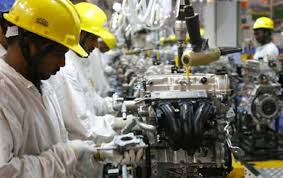
Investing in our Future
by Revati Tongaonkar September 13 2017, 7:46 pm Estimated Reading Time: 2 mins, 39 secsIndia has the world's biggest youth population, and is pinned to become home to the largest working-age population within the next two decades. A population of 1.2 billion means a lot of future potential, but for the nation to fully utilize the potential, it needs to begin to invest intelligently in the well-being of its youngsters. More than 12 million youths between ages 15-29 are expected to enter the labour force every year for the next twenty years.

To be fair, the government has begun steps in the correct direction, establishing clear goals, and setting up systems to follow up on the same, from the Swacch Bharat Mission to Aanganwadi schemes. However, the authorities need to stop thinking in terms of services provided, and strive to create a well-rounded system to improve and maintain living standards.
Prime Minister Modi has set off on a huge mission, to appropriately skill every youth in the country, to ensure labour for the 109 million skilled workers that will be needed in the 24 key sectors of the economy by the next few years, under the Skill India Mission. However, merely starting training schemes will not suffice.
World Bank Group President Jim Yong Kim says that "Prime Minister Modi’s goal of making India the human resources capital of the world will succeed only if malnutrition is addressed immediately and ambitiously. India has made significant progress over the past few years in reducing the levels of malnutrition in the country, which unfortunately still remain high."
Kim refers to the very young in India- barely 2% of our children get sufficient nutrition and water, sanitation services and proper learning opportunities in their first thousand days- said to be the most crucial period of a child's development. In a scenario where such basic necessities are not available to children, not only does it hamper their physiological and psycho-social development, but has an inverse effect on the earning population of the future and, consequently the nations productivity and GDP.
The challenge is huge, considering the population afflicted, and the limited resources that we have, but the nation has made decent progress- India is the fastest country moving to reduce stunting in children under age 5 according to the Global Nutrition Report 2016, but we have a long way to go.
A multi-pronged approach was necessary, and one such program undertaken is the Integrated Child Development Services Scheme, which has a widespread reach across 1.3 million nutrition centres in villages, and covers an estimated 102 million children under the age of six.
To aid the government's efforts, the World Bank has been aiding it in areas of nutrition, sanitation and education. The Swachh Bharat Mission is also being supported, receiving financing of $1.5 billion for 2016-2020. The project will finance high malnutrition districts across eight states of Andhra Pradesh, Bihar, Chhatisgarh, Jharkhand, Madhya Pradesh, Maharashtra, Rajasthan and Uttar Pradesh. The World Bank is also helping set up self-help groups, hoping to have improved nutrition outcomes over the next 5 years for over 1.5 million homes. It has also approved $250 million for the Skill India Mission Operation.
We need to use the resources available well enough to progress as a nation, and do what is best for our people and the country.




-173X130.jpg)
-173X130.jpg)

-173X130.jpg)
-173X130.jpg)


-173X130.jpg)